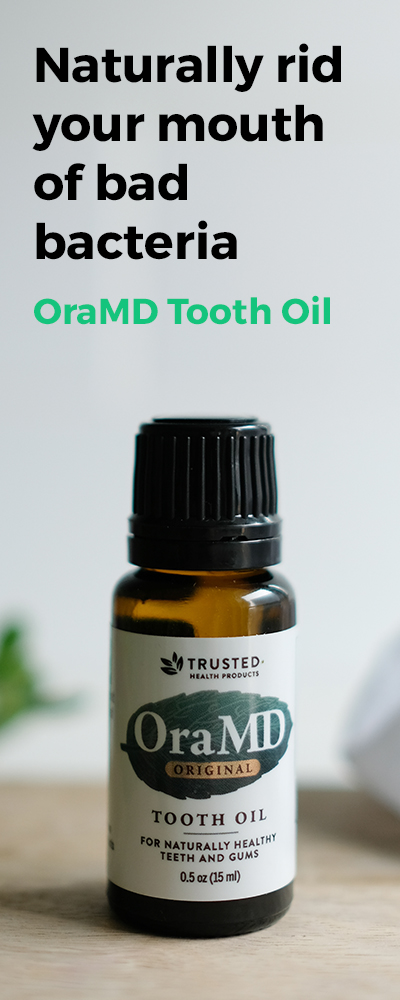Contents

What Are Bleeding Gums?
This question may seem like it has a very basic answer, “It’s gums where you see bleeding.” But bleeding gums can be a precursor to serious conditions like gingivitis and periodontal disease. If your gums bleed when you brush your teeth, you could be on the way towards some very severe situations that have been proven to increase the risk of cardiovascular disease, diabetes, stroke, and more. If your gums are swollen, or if they bleed, then your entire circulatory system is open to the attack of every form of bacteria that is present in your mouth. Symptoms such as swollen or bleeding gums are warning signs that our bodies give us so that we can take action to prevent the underlying cause from progressing beyond control.
Signs Of Bleeding Gums
Bleeding gums can be a result of gum disease as previously mentioned, but it can also be a symptom accompanying canker sores or mouth ulcers which have their own causes aside from gum disease. If bleeding occurs due to a sore in the mouth you will likely notice that the gums are sore, and these can come as single sores or in multiples. Signs that may indicate gum disease or gingivitis may include the following:
- Sore gums
- Swollen gums
- Changes in the way teeth fit together
- Formation of deep pockets between the teeth and gums
- Gums that bleed during and after brushing teeth
- Loose, or shifting teeth
- Receding gums
- Red gums
- Gums that are tender to the touch
Progression Of Bleeding Gums
| • Gums begin to darken from light pink to red • Bleeding after or during brushing | • Bleeding occurs on its own, not just when brushing | • Gums begin to recede and bleed more frequently | • Gums recede to severe levels • Bleeding occurs more regularly, and there is more blood |
Dangers Of Bleeding Gums
With gums that bleed, there is much more to consider than just the pain or discomfort associated with the bleeding itself. Even though that is enough for most people to be concerned with, there are many other ill effects that can take place after bleeding has begun if it is related to gum disease. If there is a passageway for blood to exit your tissue, it makes sense that there would be a way for other things to enter the bloodstream. If this is the case, harmful bacteria that are formed in the mouth can gain access to your bloodstream and cause a number of problems. These bacteria can bond to platelets in the blood and cause clots, which can lead to heart attack or stroke. If this happens, then a whole host of potential health effects can occur. Some of the dangers that can eventually take place are:
- Digestive system disorders
- Respiratory dysfunction
- Elevated risk for heart attack
- Diabetes
- Pancreatic cancer
- Premature births
- Underweight newborns
- Increased risk for stroke
What Causes Bleeding Gums?
There are a number of different factors that can contribute to bleeding of the gums; here are a few to watch out for:
Improper oral hygiene
When proper dental hygiene is not practiced, bacteria in the mouth can easily grow out of control. When this happens, the bacteria forms plaque, and eventually tartar. This will cause inflammation of the gums, along with swelling and bleeding. Bleeding can also occur as a result of improper flossing. Be careful to allow the floss to slide along the natural curves of the teeth, and do not force it.
- Hormonal changes
Many women will find that problems with their gums and oral health occur during the times of puberty, menstruation, pregnancy, and menopause. Hormone increases during these times can increase the flow of blood to the gums, which can make them red, swollen, and tender. Some women are more likely to see swollen, bleeding gums prior to each menstrual period with the symptoms subsiding once the period has begun. During pregnancy, swollen and bleeding gums typically begin around the third month and lasts through the eighth. The most uncommon of these hormonal causes takes place during menopause, in which women frequently complain of a dryer sensation in the mouth that can result in swelling, soreness, and bleeding.
Cancer and chemotherapy
Leukemia can cause bleeding in numerous areas of the body, including the gums. It affects the body’s blood forming tissues, including the lymphatic system and bone marrow. Many people who undergo chemotherapy to treat cancer experience stomatitis, which literally means inflammation of the mouth. This can cause the development of sores and mouth ulcers on the gums, which can bleed.
How To Prevent Bleeding Gums
We’ve previously discussed how bleeding gums can be related to gum disease, or other natural functions of the body. Here are a few ways to help prevent, or control it if you’re suffering:Establish a good oral hygiene program
Brush at least twice a day
Floss daily
Eat a well balanced diet
Include plenty of vitamin C and calcium
Drink plenty of water
Drinking water after eating can help wash food off your teeth and make it less likely for bacteria to form gum damaging plaque
Do not use tobacco products
Be cautious about extremely hot or cold foods and beverages
You may find that lukewarm or cool foods and beverages are the most comfortable to consume if you are experiencing gum problems.
Relax
Stress can raise hormone levels which can increase the likelihood of inflammation throughout your entire body, including the gums
Treatment Of Bleeding Gums
The treatment for bleeding gums can vary based upon the underlying cause. Regardless of the cause, good oral hygiene is fundamental. You should also avoid any food with sharp edges like peanuts, potato chips, or tacos. Be sure to use a soft bristled toothbrush, and brush carefully, avoiding banging the toothbrush into the gums.
Cost Of Bleeding Gums
If you can stop bleeding gums in their tracks before it progresses to something more serious, the cost can be quite low. However, if you let the bacteria get out of control then you can be looking at spending hundreds if not thousands of dollars to correct the condition. Deep cleaning to remove bacteria below the gum line can cost over $400 alone, and that is a procedure that will typically need to be performed at each 6 month visit to your dentist.
By using a product that contains the three essential oils in conjunction with the 4-step oral hygiene plan (as implemented by OraMD) you can see vast improvements with bleeding gums in a very short time.
What To Do About It
If you are plagued by red, swollen, and bleeding gums then you know you must take action to prevent it from worsening into more severe conditions. The absolute best way to do this is by making sure that your oral hygiene program is up to par. If you’re already following the outlines we’ve presented (brushing and flossing) and still not seeing improvements, then you should look at the products you’re currently using. Many over the counter products can contain chemical agents that encourage the bacteria which cause bleeding and swelling to grow at a higher rate.


